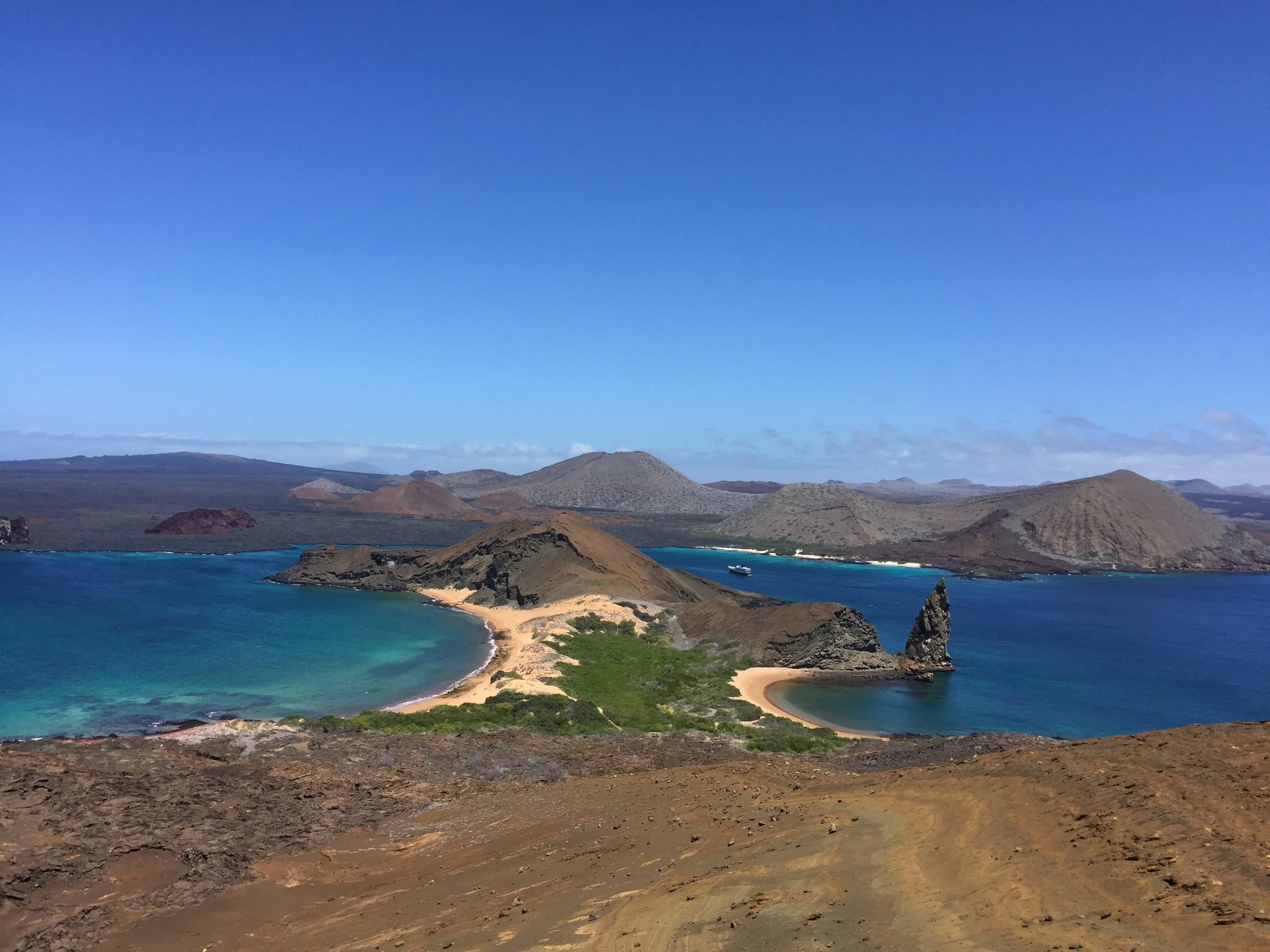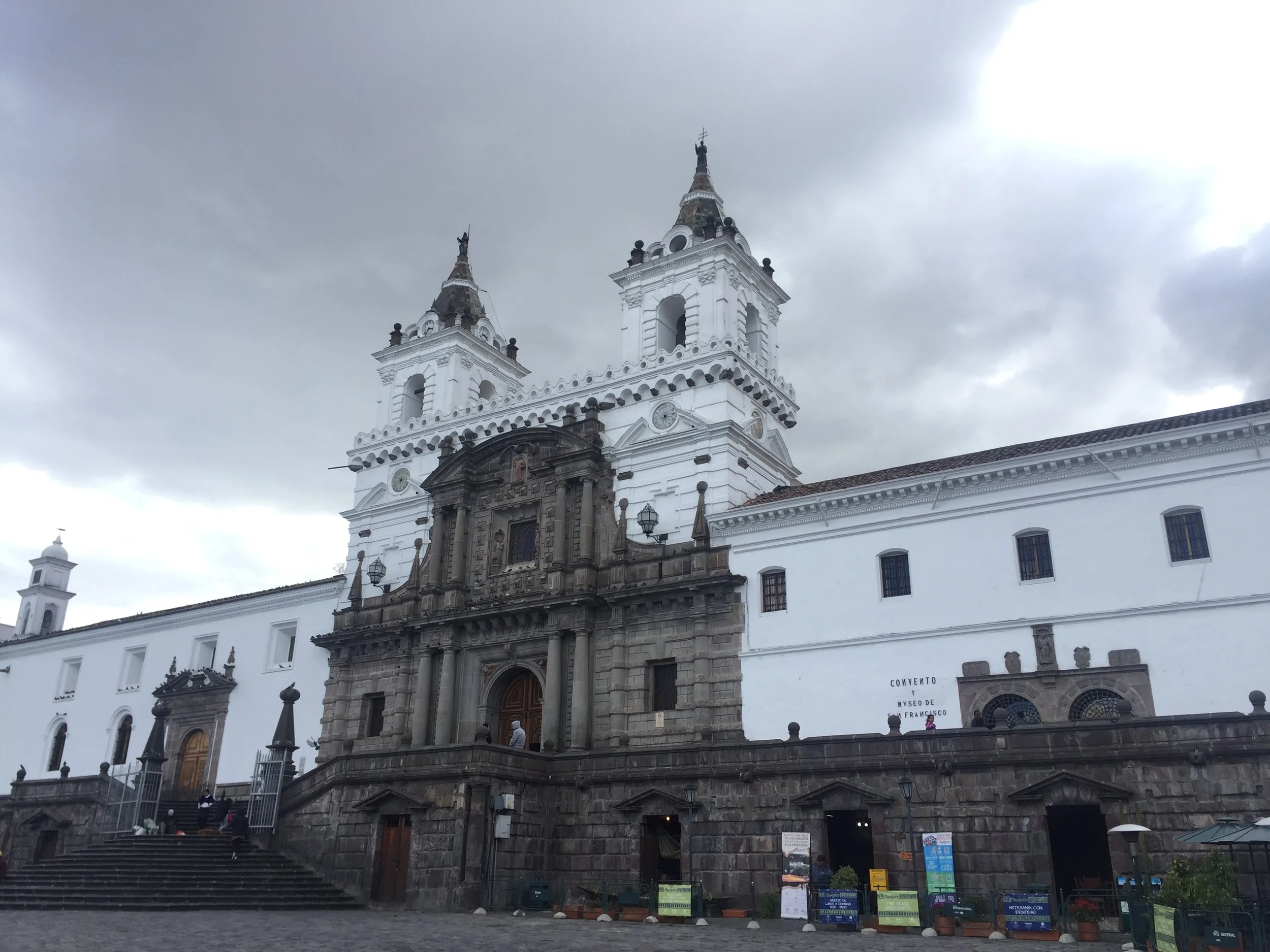All right, first things first. Nothing about visiting the Galápagos is that cheap. Yes, it's totally possible to get there independently and see plenty, and yes, you'll spend significantly less money than taking a cruise (even a cheap cruise), but thanks to its ultra remote location and expensive flights, spending time in the Galápagos is going to cost you. Not tons, mind you, but if you're looking for another setting with gorgeous white sandy beaches, dramatic surf and seasons of warm, humid weather to bliss out in, then you'll be better off looking to the Costa Ricas and Balis of the world to attain your Zen.
One of the most incredible places on the planet: Isla Bartolomé, Galápagos
That's because the Galápagos are about one thing: nature. Thankfully, over 97% of the islands are designated as national parks by Ecuador in order to preserve the Galápagos unique biodiversity. Biodiversity that comes about when you're a tiny group of volcanic islands in the middle of a gigantic ocean, accessible only by a 2.5 hours flight from the mainland or a 4-5 day trip on a cargo ship. Biodiversity that evolved over millions of years despite abundance of groundwater and an arid climate for much of the year. It's those unique features that make the Galápagos an incredible place to visit but also attribute to its fairly high cost of participating.
An affordable Galápagos adventure
All that said, you can still cobble together an affordable Galápagos adventure. Here's how I did it.
The white sand beach of Tortuga Bay on Isla Santa Cruz in the Galápagos
Galápagos Basics
Before I dive into some of my specific tips, it helps to wrap your head around how the islands are set up. There are four "inhabited" islands in the chain of islands, with Puerto Ayora being the largest town at 12,000 people and Puerto Baquerizo Moreno coming in at a mere 6,000. (There's also a small village on Isla Isabela, Puerto Villamil, and a handful of hotels and restaurants on Floreana.) Most flights fly to either Isla Baltra (for Puerto Ayora) or Isla San Cristóbal (for Puerto Baquerizo Moreno). The majority of flights, however, go to Isla Baltra, so it's very likely this is where you'll land.
Where I stayed
I stayed in Puerto Ayora at the Lonesome George Ecolodge, which I got a good deal on at $40/night. It was a comfortable room and the staff at the hotel helped arrange my two day trips to other islands as well!
Cash money
While a handful of upscale restaurants, hotel and shops accept credit cards, thanks to very shoddy Wifi, most places don't. You will need loads of cash for most of your other transactions, including hotels, most meals and day trips, and, if you're like, you'll make at least one daily trip to an ATM to stock up. There are ATMs only in Puerto Ayora and Puerto Baquerizo Moreno (at the time of writing at least), so it's something to think about before embarking on day trips (and especially over night trips) to Floreana or Isla Isabela.
A cute lil' tortoise at the Centro de Crianza de Tortugas on Isla Isabela
Day trips
I had three full days to explore the Galápagos, and I took day trips to Isla Bartolomé (by far one of the most incredible places I've ever seen) and Isla Santiago ($180) and Isla Isabela ($100). If I'd had it to do differently, I would have skipped Isla Isabela and done a day trip to Islas Seymour & Mosquera ($160) where there are lots of bird colonies -- the time to Isabela in the summer months was 2.5 hours by speedboat thanks to rough waters and it was not a fun ride. I would recommend a trip to Isabela be at least an overnight and going via the daily ferry ($30 each way) and exploring the island through day trips, taxis or local guides to see to the various sights. Day trips typically include lunch, and my trip to Bartolomé included breakfast as well.
Snorkeling in Las Grietas on Isla Santa Cruz in the Galápagos
Exploring Isla Santa Cruz/Puerto Ayora
Thankfully for any money-conscious traveller, there's plenty to be seen in the area around Puerto Ayora that's practically free. I spent my third day doing exactly this, first visiting the Charles Darwin Research Station to learn more about the research and conservation effors on the island. Then, I took a water taxi ($.60) to the Angermeyer Point restaurant and walked to Las Grietas, a water-filled crevice in rocks that you can swim and snorkle in. On the way, I passed beautiful salt flats that the locals harvest for sea salt. After lunch, I headed to Laguna de las Ninfas, a beautiful lagoon surrounded by a boardwalk path, then walked 1.5 miles to Tortuga Bay, an absolutely stunning white sand beach. On the backside there's Playa Mansa, where you can rent a kayak ($10/hr) to explore the lagoon.
Kiosks serving up inexpensive eats on Charles Binford in Puerto Ayora
Eating on the cheap
Hungry frugalistas should definitely head to Charles Binford just east of Avenida Baltra where kiosks selling cheap eats line the road which fills with tables for al fresco dining as the sun begins to set. I enjoyed grilled fresh, local fish for $10, served with rice, beans and a small salad. I also had some of the most delicious sushi at Natsumi on Avenida Baltra, where I had three half rolls for $7 each and enjoyed two meals at Isla Grill (a seafood-and-pasta special one night for $16 and a hamburger the other for approximately $10).
If you're doing day trips, you'll most likely have lunch included. But if you find yourself in Puerto Ayora during the day time, there are some good set menus around town -- I had an excellent one at Tropic Bird on Avenida Darwin consisting of soup, fresh fish (a theme when it comes to Galápagos dining), rice and salad for $4. There's also a supermarket at the far end of Avenida Darwin where you can stock up on granola bars and other dry goods (finding fruit, however, proved to be something of a real challenge – although not surprising when you realize virtually everything, including fresh water, has to be shipped in).
While nightlife on the island is fairly limited (and hello, when you're waking up at 6am to venture off on your day trips, it kind of has to be), I did enjoy the laidback vibe of Bungavilla to relax over a mango juice one day (and beer the next).
Do you have any tips for travelling inexpensively in the Galápagos? Please share in the comments!
Find your affordable hotel on Booking.com








